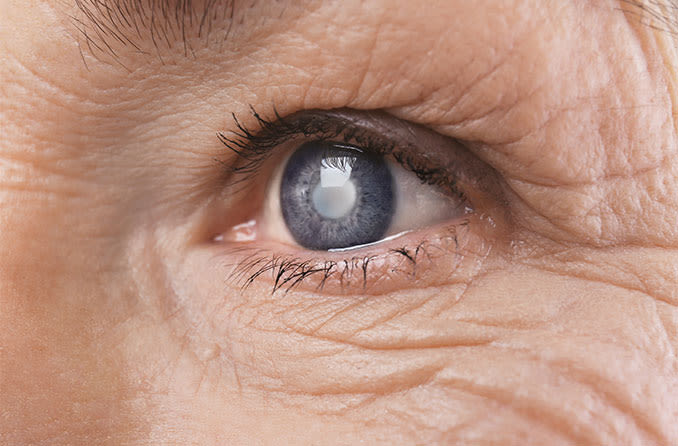If you’re considering surgery to correct your vision, you may have heard of cataract surgery. But what exactly is a cataract? A cataract is a condition that causes the lens of your eye to become cloudy or opaque. This can lead to blurry vision and eventually, blindness. There are several types of cataracts, each with its symptoms and treatment options. In this blog post, we will explore the different types of cataracts in detail so that you can make an informed decision about your treatment options.
What are Cataracts?

Cataracts are a clouding of the eye’s natural lens. This can cause blurry vision and make it more difficult to see at night. There are several types of cataracts, and they can be caused by age, disease, or injury. Surgery is the only way to remove cataracts and restore vision.
The development of cataracts is a natural part of the aging process. Most people will develop cataracts as they get older, and the risk increases with age. Cataracts are also more common in people with certain medical conditions, such as diabetes.
Cataract surgery is a safe and effective way to treat cataracts. During surgery, the cloudy lens is removed and replaced with an artificial lens. Surgery can be done on an outpatient basis, and most people can go home the same day. Recovery from surgery is usually quick, and most people experience significant improvement in their vision.
Different Types of Cataracts

Cataracts are usually classified according to where they form in the eye.
There are many types of cataracts, but the most common are nuclear cataracts, posterior subcapsular cataracts, and cortical cataracts.
Nuclear Cataract: This type of cataract forms in the central zone (nucleus) of the eye’s lens. Detailed descriptions of these types of cataracts are as follows:
Age-Related Cataract
There are several types of cataracts, but age-related cataracts are the most common type. Age-related cataracts occur when the proteins in the eye’s lens start to clump together. This causes the lens to become cloudy and makes it difficult to see clearly.
Age-related cataracts are not preventable, but they are treatable. Surgery is the only way to remove a cataract. During surgery, an ophthalmologist will make an incision in the eye and then use a special instrument to break up the cloudy lens and remove it. A new artificial lens will be inserted in its place. Surgery is usually successful in improving vision and can be performed on an outpatient basis.
Traumatic Cataract

A traumatic cataract is a type of cataract that occurs after an injury to the eye. The most common cause of a traumatic cataract is a blow to the head, which can cause the lens of the eye to become dislodged or fractured.
Traumatic cataracts can also occur after surgery to the eye, or after exposure to extreme heat or cold. Symptoms of a traumatic cataract may include blurred vision, double vision, and pain in the affected eye. Treatment for a traumatic cataract typically includes surgery to remove the damaged lens and replace it with an artificial lens.
Pediatric Cataract
Pediatric cataracts are a type of cataract that affects infants and young children. Cataracts are a clouding of the eye’s lens, which leads to decreased vision. Pediatric cataracts can be congenital (present at birth) or acquired (develop after birth).
Symptoms of pediatric cataracts include decreased vision, white or cloudy areas in the pupil, sensitivity to light, and squinting. If left untreated, cataracts can cause serious vision problems, including blindness.
Pediatric cataracts are treated with surgery to remove the cloudy lens and replace it with an artificial lens. Surgery is typically performed on an outpatient basis and takes less than an hour. After surgery, most children experience significant improvement in their vision.
Posterior Capsule Cataract
A posterior capsular cataract is a clouding of the back of the lens. This type of cataract usually occurs in people who have had previous eye surgery, such as those who have had a previous cataract removed or who have had retinal detachment surgery. Posterior capsular cataracts can also occur in people with diabetes.
The development of a posterior capsular cataract is gradual, and people with this type of cataract may not notice any changes in their vision at first. As the cloudiness gets worse, however, it can cause glare and difficulty seeing at night. In addition, it can make it difficult for a person to see to the sides (peripheral vision).
Posterior capsular cataracts are treated with surgery. During surgery, an instrument called a phacoemulsifier is used to break up the cloudy lens so that it can be removed from the eye. A new artificial lens is then put into place.
Congenital Cataracts

There are several types of cataracts, and each has its own set of symptoms and characteristics. Congenital cataracts are a type of cataract that is present at birth or develops in early childhood. These cataracts can be caused by genetic factors, infections, or trauma during pregnancy or delivery.
Symptoms of congenital cataracts include:
Blurry or fuzzy vision
Decreased ability to see colors
Sensitivity to light
Eye pain or discomfort
Congenital cataracts can cause serious problems with vision if they are not treated promptly. If you suspect that your child has a congenital cataract, it is important to see an eye doctor right away. Treatment for congenital cataracts may involve surgery to remove the cloudy lens and replace it with a clear artificial lens.
Nuclear Cataracts
Nuclear cataracts are the most common type of cataract, and they usually occur as people age. Also, Nuclear cataracts form in the nucleus, or center, of the eye’s lens.
These cataracts tend to grow slowly and initially have little effect on vision. But over time, they can cause the lens to become increasingly opaque, resulting in blurry vision and eventually blindness.
Nuclear cataracts are not reversible, but they can be treated with surgery. During surgery, the cloudy lens is removed and replaced with an artificial one.
Cortical Cataracts
Cortical cataracts are the most common type of age-related cataracts. They form when the protein fibers in the cortex (the back part) of the lens start to clump together. This makes the lens less flexible and causes it to become cloudy.
Cortical cataracts usually develop slowly and don’t usually affect vision until they are large. They can be diagnosed with a dilated eye exam.
Treatment for cortical cataracts usually involves surgery to remove the cloudy lens and replace it with an artificial one (intraocular lens, or IOL).
Conclusion
There are many different types of cataracts, and each one has its own unique set of symptoms and causes. It’s important to be aware of the different types so that you can get the best possible treatment for your condition. We hope that this guide has helped give you a better understanding of the different types of cataracts and their associated symptoms. If you have any further questions, be sure to consult with your eye doctor.
Cataract surgery is a safe and painless procedure. At EyeMantra we have a team of experienced eye surgeons, who will be happy to answer any questions on cataract surgery, cataract surgery cost, cataract lens cost for different cataract surgery types- Phacoemulsification, MICS & Femto Laser Cataract. Call us at +91-9711116605 or email at [email protected] for inquiries.


